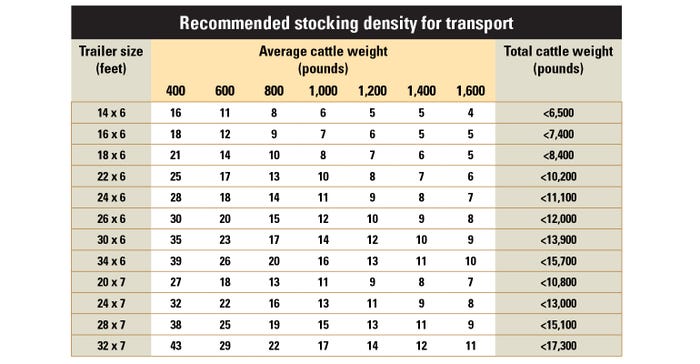September 19, 2017

By Bill Halfman
Fall is a time of the year when we haul a lot of our cattle from one location to another. Hauling may include bringing cow-calf pairs, yearling heifers and bulls home from pasture; taking feeder calves and culls to the sale barn or their next home; and transporting newly purchased feeders to the feedlot.
Maintenance checks
Safe transportation of cattle starts with proper maintenance of the truck and trailer.
The time to do these maintenance checks is well in advance of when the cattle need to be hauled to provide time to fix any problems without pushing back the transport date. If these chores are put off until the last minute, they often do not get done, because we get in a hurry and run out of time.
Proper maintenance will minimize the risk of devastating accidents that not only can damage equipment, but also can injure or kill people and cattle.
No matter what the case may be, it is a good idea and time well spent to get ready for hauling. Preparation should include set up of loading and unloading areas and a pre-inspection of the truck and trailer you will be using.
Stocking density
The stocking density in trailers is important for maintaining cattle well-being and minimizing injuries. The table below has loading recommendations for various weights of cattle and various trailer sizes. Gross vehicle weight ratings should not be exceeded to ensure safe hauling. The maximum legal load limit must be followed for each state that cattle are being transported through.

Other important considerations related to stocking density and trailer use include:
• Determine the appropriate weight distribution of cattle for your specific trailer type (gooseneck vs. bumper hitch) and the number of compartments within the trailer.
• When hauling cow-calf pairs, separate the cows from the calves in the trailer to ensure the safety of the calves.
• When hauling bulls, separate them from each other. Also separate bulls from cows or calves.
• Bulls unfamiliar with each other should not be mixed on a trailer. Damage to the trailer and animals is likely to occur if they fight to establish a hierarchy.
• Horned or tipped cattle should be separated from polled animals, and the space allowance should be appropriate for each group with respect to horn status.
• Balance the weight to get the best towing performance and smoothest ride.
• Also be considerate of the route taken and how you drive to prevent cattle from jostling or slipping. Avoid sudden accelerations, stops or turns, and pick roads that have minimal sharp turns and stops.
Planning ahead, preparation, attention to detail and keeping safety in mind can help ensure everyone has a safe, successful experience when hauling cattle this season.
Halfman is the Extension agriculture agent in Monroe County, Wis. This column is provided by the University of Wisconsin Extension’s Wisconsin Beef Information Center. Learn more at fyi.uwex.edu/wbic.
You May Also Like




